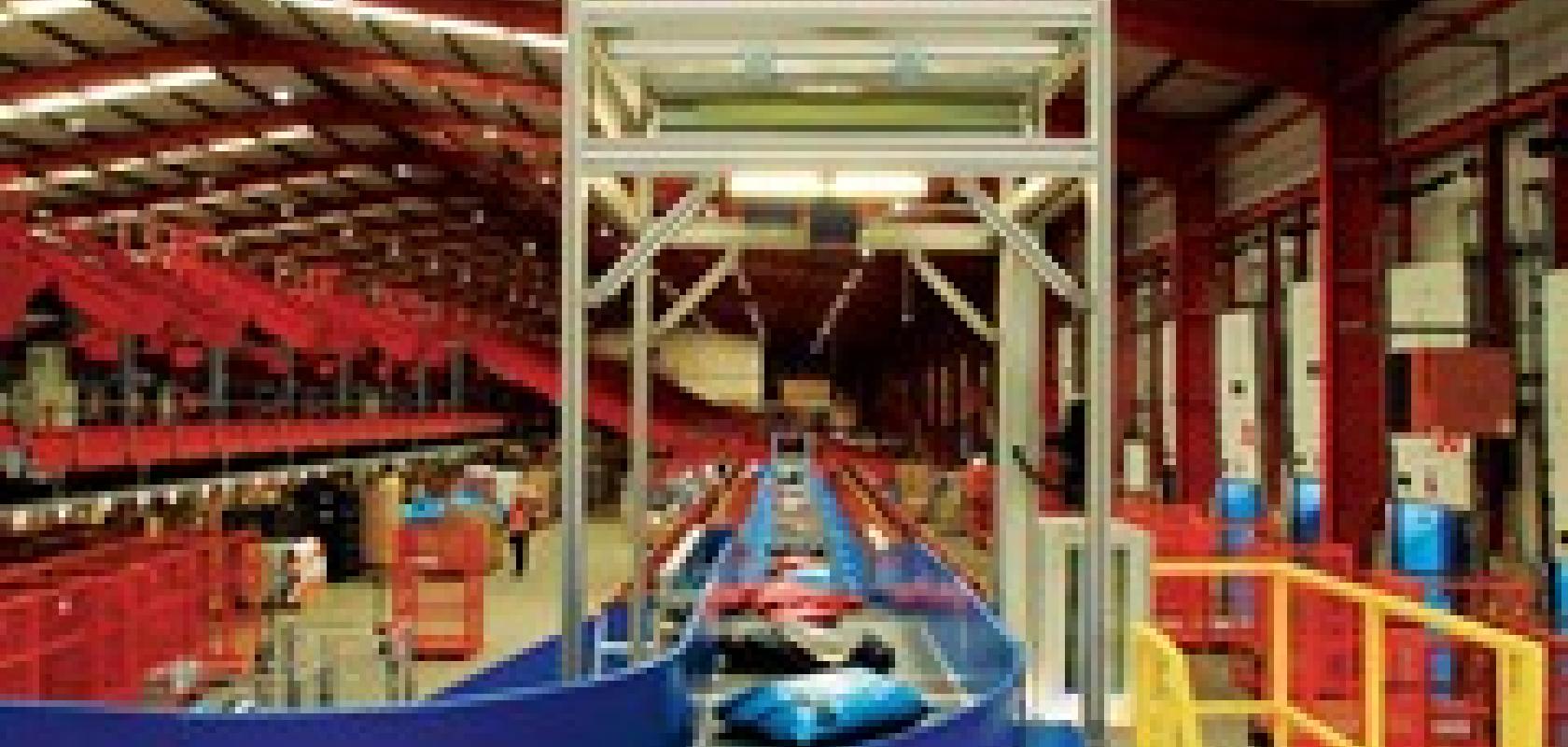As home delivery courier Hermes has been expanding, more pressure has been placed on its existing automation infrastructure. To cope with this, Hermes decided on a strategy of optimisation of their automatic sorting systems by targeting the types and sizes of the items being sorted. Their thoughts were that if they could identify the number of small parcels, bagged and flats that were going through their two existing shoe sorters, then they could design a new system to remove these items and sort them separately, thereby freeing up more space on their bigger sorters for the larger items.
The application involved the design of a new system to handle these small parcels, bagged and flat items. This involved the installation of a new vertical cross belt sorter, opening six new induct doors, five new extending boom conveyors and a new conveyor system.
One of the criteria imposed on the system was that the system had to have a small footprint as space was at a premium. This was achieved by installing a vertical cross belt sorter from Interroll feeding into cages instead of down chutes. Other criteria were that the system needed to be capable of sorting 6,000 items/h and this was achieved with a conveyor speed of 1.7ms. The system is capable of sorting to 36 cage positions which equate to 36 destinations. However there is the possibility of having multiple destinations in one cage or multiple cages for one destination, this is due to the difference in the amounts of business done at each destination.
Also as part of the overall criteria was the need for reliable and accurate data capture. To achieve this Hermes turned to Vitronic, who had previously installed two multisided camera barcode reading systems on the two existing shoe sorters.
Peter Jones, Hermes’ projects engineering manager, stated: 'The two multisided systems on the existing sorters have now been in operation for three years and have given us no problems and excellent read rates. Because of this we decided that Vitronic should be asked to supply the new camera system.'
Vitronic supplied a top reading camera system with volume measurement to the same standards as the previous systems. This involved the installation of a camera system that would tackle the problem of reading barcodes on bagged items and items covered with foils.
In the previous system, Vitronic had provided two Vipac R5 - six camera five sided reading systems, which included two top cameras looking at different angles to the items. This would enable the cameras to read the barcodes from two different views enabling the capture of wavy barcodes or barcodes with foil creating reflections. This idea was also adopted in the new system, with the installation of a VIPAC R1 – two camera system. Also included in the camera system was the Vitronic Web Viewer software, which enables a person to log into the system from anywhere in the world via web-enabled devices.


